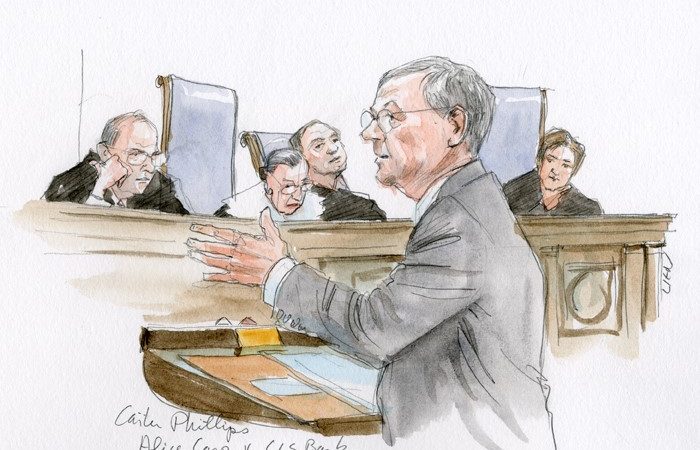The past few years have seen significant activity in the courts with respect to the patentability of software and business methods. Since 1981 when the Supreme Court decided Diamond v. Diehr indicating that an invention using a computer program may be patented, courts have sought clarification to determine under what circumstances software and business methods are patentable.
In a June 2014 ruling in Alice Corporation Pty. Ltd. v. CLS Bank International, the U.S. Supreme Court provided strong insight into what constitutes subject matter eligible to be patented, particularly with regard to business method and software patent applications. The patents in question in the case claimed a method for exchanging financial obligations, a computer system for carrying out such method, and a computer-readable medium for performing such method. The court held that the patent claims were drawn to a patent-ineligible abstract idea.
In deciding the case, the Supreme Court applied the framework for analysis set forth in its 2012 opinion in Mayo Collaborative Services v. Prometheus Laboratories, Inc. First, the patents’ claims were determined to be drawn to the abstract idea of “intermediated settlement”, the Court noting that the concept of intermediated settlement (i.e., the use of a third party to mitigate settlement risk) is a fundamental “long prevalent” economic practice and that use of a third-party intermediary is a “building block of the modern economy”. Second, it was determined that the claims did not contain an “inventive concept” sufficient to transform this abstract idea into a patent-eligible concept, the Court asserting that the introduction of a generic computer for performing the method did not supply the necessary inventive concept, and that a new and useful application of the abstract idea was required for the idea to be patent eligible. To contrast this holding, the Court cited Diamond v. Diehr (1981) in which a process using a temperature sensor to record constant temperature measurements inside a rubber mold was held patent eligible “because [the patent claims] improved an existing technological process, not because they were implemented on a computer.”
In light of the Supreme Court’s decision, the U.S. Patent & Trademark Office (“USPTO”) issued a June 25, 2014 memorandum to its patent examiners. The memo sets forth the two step process described in the Court’s opinion, beginning with determining if an abstract idea is present in the claim. If an abstract idea is present, the claim is patent-ineligible unless “any element, or combination of elements, in the claim is sufficient to ensure that the claim amounts to significantly more than the abstract idea itself.” Example abstract ideas are listed in the memo including “[f]undamental economic practices”, “[c]ertain methods of organizing human activities”, “[a]n idea of itself”, and “mathematical relationships/formulas”. Further listed are examples of elements for transforming an abstract idea into a patent eligible concept, such elements including “[i]mprovements to another technology or technical field”, “[i]mprovements to the functioning of the computer itself”, and “[m]eaningful limitations beyond generally linking the use of an abstract idea to a particular technological environment”.
It does not appear that subject matter patent-eligibility will be more predictable than it was prior to the Alice v. CLS Bank decision. A patent examiner or judge has significant leeway in determining what constitutes an abstract idea and what constitutes an inventive concept sufficient to transform an abstract idea into patent-eligible subject matter. While the USPTO memo clearly states that as a rule no particular category of subject matter (e.g., “software or business methods”) is per se excluded from patent eligibility, it does appear that subject matter directed to software and business methods are likely to be deemed abstract ideas. Issues of subject matter eligibility should be particularly considered during the initial stages of preparing a patent application for such inventions. It can be said with relative certainty that courts will have more work to do to clarify what types of invention are eligible for patent protection.

